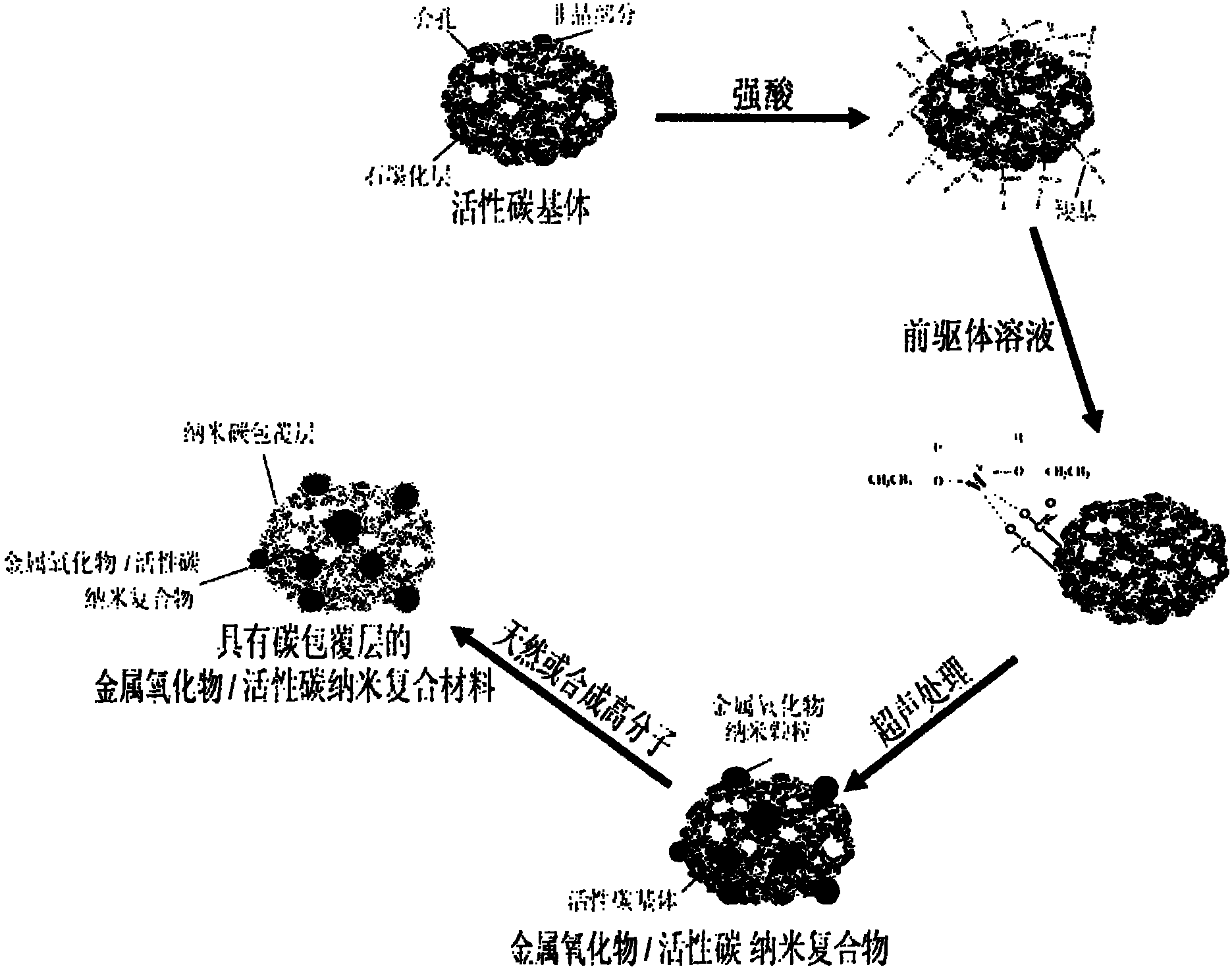Method for preparing nano-carbon coated lithium battery anode material
A negative electrode material, lithium battery technology, applied in battery electrodes, circuits, electrical components, etc., can solve the problems of complex preparation process, limited mitigation effect, and high preparation methods, and achieve the effects of enhanced stability, convenient transmission, and good electrical conductivity
- Summary
- Abstract
- Description
- Claims
- Application Information
AI Technical Summary
Problems solved by technology
Method used
Image
Examples
Embodiment 1
[0024] Take 1 portion of discarded crop chaff, wash it with deionized water and dry it at 90°C, put it into a vacuum sintering furnace at 5°C / min and raise the temperature to 650°C for 1 hour to carbonize; then use 0.2M ferric chloride solution Mix it with the sample evenly, place it in a vacuum sintering furnace and heat it to 800°C, keep it warm for 2 hours for graphitization treatment, stir the obtained sample with dilute hydrochloric acid, and then rinse the above sample with water repeatedly. A highly graphitized mesoporous activated carbon matrix was obtained.
[0025] The sample in step 1 was treated with 98% concentrated sulfuric acid under reflux for 3 hours, rinsed with water and then dried; the above sample was added to tin chloride aqueous solution for ultrasonic treatment for 5 hours, rinsed and dried to obtain tin dioxide particles / activated carbon with uniform particle distribution composite material.
[0026] Take 1 part of the above sample and 0.5M polyethyle...
Embodiment 2
[0028] Take 1 part of discarded crop straw, wash it with deionized water and dry it at 100°C, put it into a vacuum sintering furnace at 8°C / min and raise the temperature to 600°C for 2h to carbonize; then use 0.5M cobalt nitrate solution and sample Mix evenly, heat to 750°C in a vacuum sintering furnace, keep warm for 3 hours for graphitization treatment, stir the obtained sample with dilute hydrochloric acid, and then rinse the above sample with water repeatedly. A highly graphitized mesoporous activated carbon matrix was obtained.
[0029] Reflux the sample in step 1 with concentrated nitric acid for 3 hours, rinse it with water and dry it; add the above sample into an aqueous solution of tin chloride for ultrasonic treatment for 4 hours, rinse and dry it to obtain a tin dioxide particle / activated carbon composite material with uniform particle distribution .
[0030] Mix 1 part of the above sample with 0.8M starch solution by ultrasonic treatment; then transfer the suspens...
Embodiment 3
[0032] Take 1 waste coconut shell, wash it with deionized water and dry it at 95°C, put it into a vacuum sintering furnace at 10°C / min and raise the temperature to 600°C for 1h to carbonize; then use 0.4M nickel sulfate solution and sample Mix evenly, place in a vacuum sintering furnace and heat to 900°C, keep warm for 1 hour for graphitization treatment, stir the obtained sample with dilute hydrochloric acid, and then rinse the above sample with water repeatedly. A highly graphitized mesoporous activated carbon matrix was obtained.
[0033] The sample in step 1 was treated with 98% concentrated sulfuric acid under reflux for 3 hours, rinsed with water and then dried; the above sample was added to tin chloride aqueous solution for ultrasonic treatment for 5 hours, rinsed and dried to obtain tin dioxide particles / activated carbon with uniform particle distribution composite material.
[0034] Take 1 part of the above sample and 1.2M polyisoprene solution and mix them uniformly...
PUM
| Property | Measurement | Unit |
|---|---|---|
| The average particle size | aaaaa | aaaaa |
| Specific surface area | aaaaa | aaaaa |
| Aperture | aaaaa | aaaaa |
Abstract
Description
Claims
Application Information
 Login to View More
Login to View More - R&D
- Intellectual Property
- Life Sciences
- Materials
- Tech Scout
- Unparalleled Data Quality
- Higher Quality Content
- 60% Fewer Hallucinations
Browse by: Latest US Patents, China's latest patents, Technical Efficacy Thesaurus, Application Domain, Technology Topic, Popular Technical Reports.
© 2025 PatSnap. All rights reserved.Legal|Privacy policy|Modern Slavery Act Transparency Statement|Sitemap|About US| Contact US: help@patsnap.com


